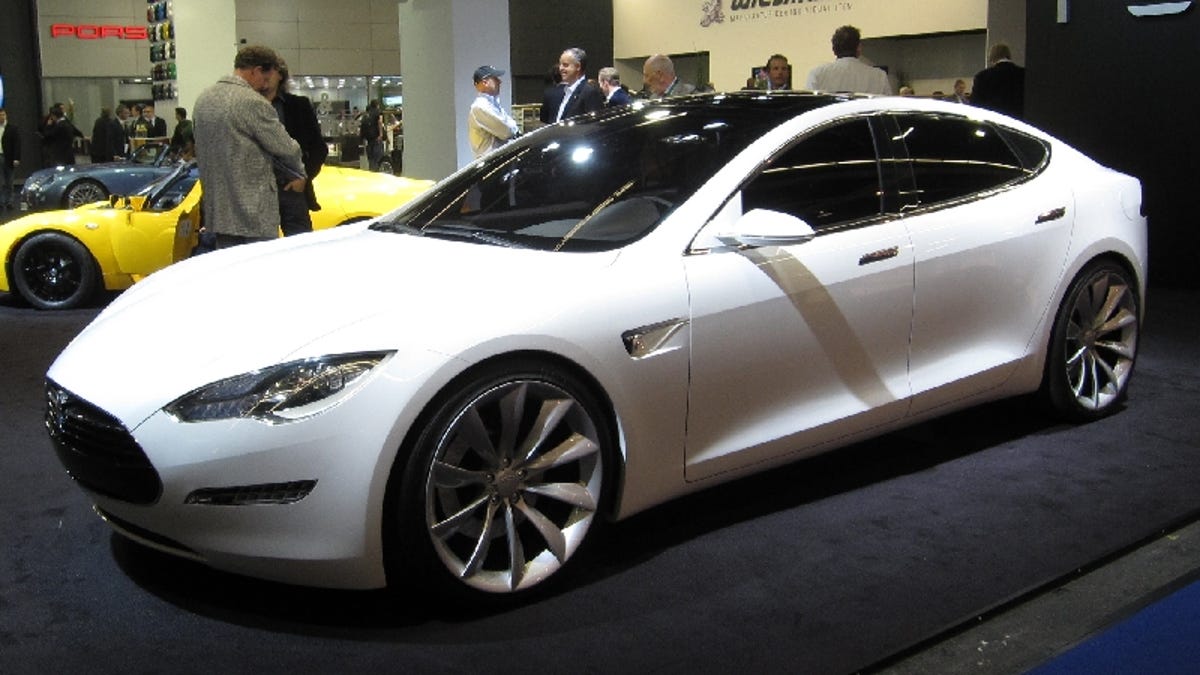Tesla Model S: The battery pack
CNET Car Tech gets a look at the Tesla Model S battery pack during a tour of Tesla Headquarters.

PALO ALTO, Calif--During a tour of Tesla's headquarters, a big, black slab caught our attention. It was sitting in a thermal testing station that would put it through a range of temperatures from -104 degrees all the way up to 122 degree Fahrenheit. This slab is the battery pack for the upcoming Tesla Model S.
Tesla's first production car, the Roadster, had a boxy shaped battery pack designed to fit right behind the seats of a Lotus Elise, the chassis that Tesla uses for the Roadster. As the Model S was designed and will be built by Tesla, the company had a lot more leeway on how it formatted the battery.
Tesla decided to package it in the floor of the car, contributing to the vehicle's handling by keeping its center of gravity low. Tesla has not specified how much the Model S' battery pack weighs, but it looked bigger than that in the Roadster, which comes in at close to 1,000 pounds. To our quick eyeballing of the Model S battery pack size, we're guessing at 7 feet long, 4 feet wide, and 6 inches thick.
Similar to the Roadster, the Model S battery pack is filled with cylindrical lithium ion cells dubbed 18650s. Tesla does extensive testing of these cells at its headquarters, cycling them at different temperatures, trying different discharge rates, and even crushing them. The data Tesla collects gets used to refine the specifications sent to its suppliers, among them Panasonic and Samsung.
When the Model S goes into production in 2012, customers will be able to specify three different battery packs, 160, 230, and 300 mile range capability. The Model S will accelerate to 60 mph in 5.6 seconds, with a top, governed speed of 120 mph.
Chief Engineer Peter Rawlinson explained to us that the battery pack also serves to help the Model S' torsional rigidity and safety. Cross members keep it from flexing much, and he anticipates that the Model S will lead its segment in rigidity, contributing to the car's handling. The pack also serves as a brace, helping to limit cabin intrusion during a side impact.
Although the battery pack is a large slab that makes up a key component of the car's structure as well as powertrain, Tesla is designing it to be swappable in one minute.
Tesla boasted during our tour that its battery packs have the highest energy density amongst all electric vehicle competitors, and the company is constantly working to improve that density. Even though competitors have designed batteries in different form factors, the Tesla battery pack, relying on what are essentially laptop batteries, still gives its cars greater range because of this higher density.
A liquid cooling system helps maximize the life of the battery packs, which Tesla sets out 7 years/100,000 miles, although its warranty for the Roadster is only 3 years/36,000 miles. No word yet on the Model S warranty. The Model S will also use a liquid cooling system for its drive motor to help performance.
Tesla will discontinue production of the Roadster in 2011, when its contract with Lotus ends, but should still have Roadsters for sale into 2012. The Model S begins production in mid-2012 with sales coming soon after.

